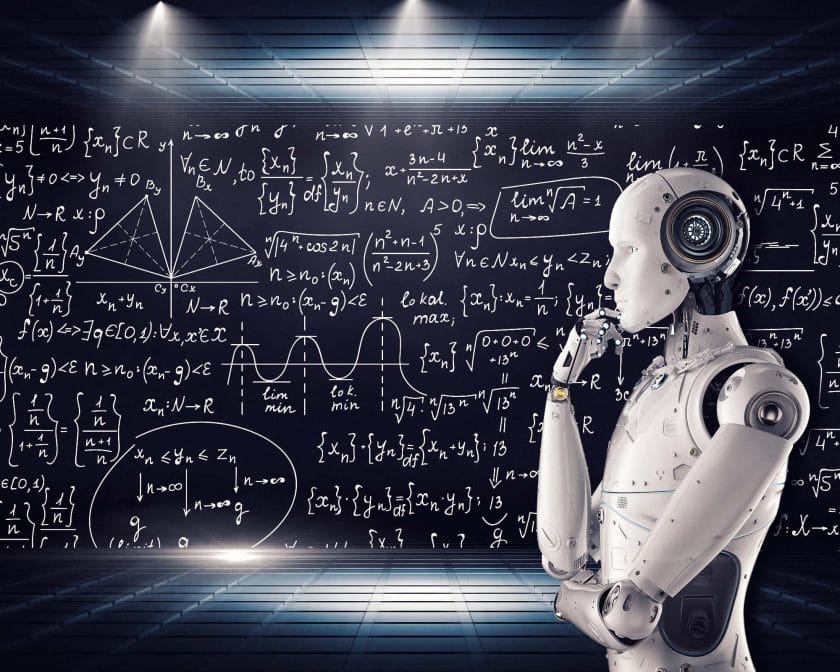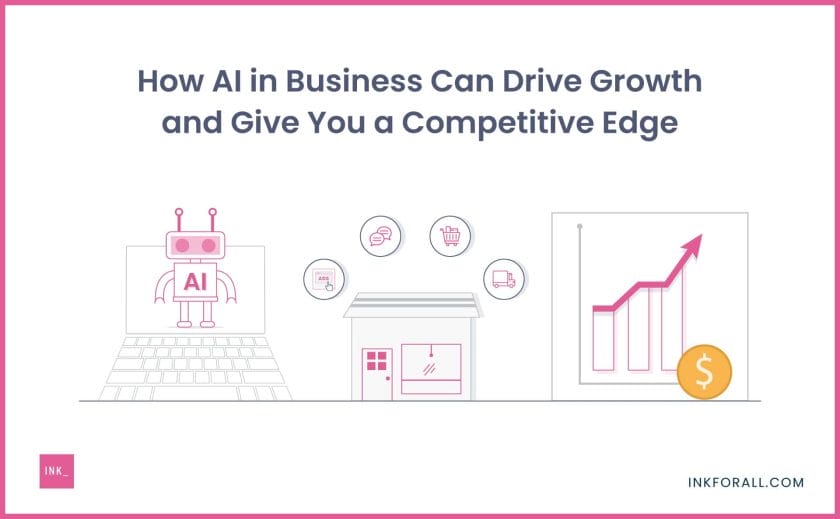“Exploring the realm of AI-powered tools has brought forth some surprising discoveries. Were any of these tools particularly unexpected? Let’s delve into the world of AI and find out.”
What is AI and How Does it Work?
As an AI expert, I often get asked this question. Simply put, Artificial Intelligence (AI) refers to the ability of machines to perform tasks that typically require human intelligence. This includes tasks such as recognizing speech or images, making decisions, and even learning from experience.
AI works by using algorithms, which are essentially step-by-step instructions for completing a task. These algorithms can be trained using large amounts of data to recognize patterns and make predictions based on that data. Machine learning is a subset of AI that focuses on building algorithms that can learn from data without being explicitly programmed.
Deep learning is another subset of AI that uses neural networks to simulate the way the human brain learns and processes information. Deep learning has been particularly successful in areas such as image recognition and natural language processing.
Overall, AI works by combining advanced algorithms with large amounts of data to enable machines to perform complex tasks that would normally require human intelligence.
The Use of AI Tools in Various Industries Today
AI tools are being used in a wide range of industries today, from healthcare to finance to transportation. Some common applications include:
– Healthcare: AI tools are being used for everything from diagnosing diseases to developing personalized treatment plans.
– Finance: Banks and other financial institutions are using AI tools for fraud detection, risk management, and investment analysis.
– Transportation: Self-driving cars are perhaps the most well-known application of AI in transportation, but there are also many other uses such as optimizing logistics operations.
– Retail: Companies are using AI tools for everything from predicting customer demand to personalizing shopping experiences.
These are just a few examples – the potential applications for AI tools are virtually limitless!
Surprising Industries That are Using AI Tools
While many industries have embraced AI tools already, there are some surprising ones that you might not expect:
– Agriculture: AI tools are being used to optimize crop yields and reduce waste.
– Sports: Teams are using AI tools to analyze player performance and make strategic decisions.
– Art: Some artists are using AI tools to create new works of art or enhance existing ones.
These industries might not seem like obvious candidates for AI, but they demonstrate just how versatile these tools can be.
Successful Examples of AI Tools in Certain Industries
There are many examples of successful applications of AI tools in various industries. Here are just a few:
– Healthcare: IBM’s Watson for Oncology is an AI tool that helps doctors develop personalized treatment plans for cancer patients. It has been shown to improve patient outcomes and reduce costs.
– Finance: JPMorgan Chase uses an AI tool called COiN to review legal documents such as loan agreements. This has reduced the time it takes to review these documents from 360,000 hours per year down to seconds.
– Transportation: Uber uses machine learning algorithms to predict rider demand and optimize driver routes. This has helped reduce wait times for riders and increase earnings for drivers.
These examples demonstrate the significant impact that AI tools can have on businesses and industries.
How Companies Decide Which AI Tools to Invest In and Implement
Deciding which AI tools to invest in can be a daunting task for companies. Some factors that might influence this decision include:
– The specific needs of the business: Companies should consider which tasks or processes could benefit most from automation or optimization with the help of AI.
– The cost-effectiveness of the tool: Companies need to weigh the potential benefits against the cost of implementing the tool, including any necessary training or infrastructure changes.
– The reliability and accuracy of the tool: Companies should thoroughly evaluate any potential AI tool before investing in it, including testing its accuracy and reliability.
Ultimately, companies should carefully consider their options and choose an AI tool that is well-suited to their specific needs and goals.
Instances Where Companies Invested in AI Tools That Didn’t Work as Expected
While there are many success stories when it comes to AI tools, there have also been instances where companies invested in tools that didn’t work out as expected. Some reasons for this might include:
– Inaccurate or incomplete data: AI tools rely heavily on data, so if the data being used is inaccurate or incomplete, the tool may not be able to perform as expected.
– Poor implementation or training: Even the best AI tool won’t be effective if it’s not implemented properly or users aren’t trained adequately on how to use it.
– Overreliance on the tool: While AI can be incredibly powerful, it’s important for companies to remember that it’s just one tool in their arsenal. Overreliance on AI can lead to blind spots and missed opportunities.
Companies should carefully evaluate any potential AI tool before investing in it, and should be prepared to make adjustments or even abandon a tool if it’s not working out as expected.
Ethical Concerns Surrounding the Use of AI Tools
As with any new technology, there are ethical concerns surrounding the use of AI tools. Some of these concerns include:
– Bias: If an AI tool is trained using biased data, it may perpetuate and even amplify existing biases.
– Privacy: As more and more personal data is collected by AI tools, there are concerns about how that data will be used and who will have access to it.
– Job loss: There are fears that automation enabled by AI could lead to widespread job loss across many industries.
It’s important for companies and policymakers to address these concerns proactively in order to ensure that the benefits of AI are realized while minimizing any negative impacts.
The Impact of AI Tools on the Job Market
There are concerns that AI tools could lead to widespread job loss, particularly in industries such as manufacturing and transportation. However, many experts believe that AI will also create new jobs and opportunities.
For example, there will likely be increased demand for workers who can develop and maintain AI tools, as well as workers who can collaborate effectively with these tools. Additionally, as AI takes over more routine tasks, workers may be able to focus on more creative or strategic work.
Overall, while the impact of AI on the job market is still uncertain, it’s clear that companies and workers alike will need to adapt to these changes in order to stay competitive.
The Difference Between Machine Learning and Deep Learning, and How They Relate to AI Tools
Machine learning and deep learning are both subsets of AI that involve training algorithms using large amounts of data. The main difference between the two is the complexity of the algorithms involved.
Machine learning algorithms are relatively simple compared to deep learning algorithms. They typically involve a single layer of neurons that learn from data through a process called backpropagation. Machine learning is often used for simpler tasks such as image recognition or natural language processing.
Deep learning algorithms, on the other hand, involve multiple layers of neurons that simulate the way the human brain processes information. Deep learning has been particularly successful in areas such as speech recognition and computer vision.
Both machine learning and deep learning are important components of many AI tools today. The choice between them depends largely on the complexity of the task at hand.
New Advancements or Breakthroughs in the Field of AI Leading to Unexpected Uses for These Tools
AI is a rapidly evolving field with new advancements and breakthroughs being made all the time. One recent development is GPT-3 (Generative Pre-trained Transformer 3), an advanced language model developed by OpenAI that can generate human-like text based on a given prompt.
This technology has a wide range of potential applications, from chatbots that can hold more natural conversations with users to content creation tools that can automate the writing of news articles or other text-based content.
Another recent breakthrough is AlphaFold, a deep learning system developed by Google’s DeepMind that can predict protein folding with remarkable accuracy. This could have major implications for drug discovery and other areas of biomedical research.
Overall, these advancements demonstrate the incredible potential of AI tools to revolutionize many different industries and fields.
Limitations or Challenges Facing the Development and Implementation of AI Tools Currently
While AI tools have made significant progress in recent years, there are still some limitations and challenges facing their development and implementation. Some of these include:
– Data quality: As mentioned earlier, AI relies heavily on data. If the data being used is inaccurate or incomplete, this can limit the effectiveness of an AI tool.
– Interpretability: Many AI algorithms are “black boxes” – it’s not always clear how they arrive at their decisions or predictions. This can make it difficult for humans to understand and trust these tools.
– Bias: As also mentioned earlier, biased data can lead to biased algorithms. It’s important to ensure that AI tools are trained using diverse and representative datasets in order to minimize bias.
Addressing these challenges will be key to unlocking the full potential of AI tools in the future.
Consumer Attitudes Towards Interacting with Customer Service Chatbots Powered by AI Technology
As more companies turn to chatbots powered by AI technology for customer service interactions, there has been some concern about how consumers will respond. However, research suggests that attitudes towards these chatbots are generally positive.
One study found that consumers were more satisfied with customer service interactions when they involved chatbots compared to traditional methods such as phone calls or emails. Additionally, younger consumers were more likely than older ones to prefer chatbots for customer service interactions.
Overall, it seems that consumers are becoming increasingly comfortable with interacting with chatbots powered by AI technology for customer service purposes.
Potential Risks Associated with Relying Too Heavily on AI Tools for Decision-Making Processes Within Businesses or Government Organizations
While AI tools can be incredibly powerful, there are potential risks associated with relying too heavily on them for decision-making processes within businesses or government organizations. Some of these risks include:
– Lack of human oversight: If decisions are being made entirely by an AI tool without any human oversight, this could lead to errors or biases going unnoticed.
– Overreliance on data: While data is important for training AI algorithms, it’s not always a perfect representation of reality. Overreliance on data could lead to decisions that don’t take into account important contextual factors.
– Lack of transparency: As mentioned earlier, many AI algorithms are “black boxes” – it’s not always clear how they arrive at their decisions or predictions. This lack of transparency can make it difficult to understand and challenge these decisions.
To mitigate these risks, it’s important for businesses and government organizations to carefully evaluate the role of AI in their decision-making processes and ensure that there is adequate human oversight and transparency.
Avoiding Bias in Algorithms Powering AI Tools, Especially Regarding Hiring Practices or Criminal Justice Decisions
As mentioned earlier, bias is a major concern when it comes to developing and implementing AI tools. This is particularly true in areas such as hiring practices or criminal justice decisions where biased algorithms could have serious consequences.
To avoid bias in these contexts, companies and policymakers should consider the following:
– Diverse datasets: It’s important to ensure that the data being used to train algorithms is diverse and representative.
– Ongoing evaluation: Algorithms should be regularly evaluated for bias and adjusted as necessary.
– Human oversight: There should always be a human in the loop to ensure that decisions made by AI tools are fair and ethical.
By taking these steps, it’s possible to minimize bias in algorithms powering AI tools and ensure that they are making fair and unbiased decisions.
Exciting Developments in Artificial Intelligence Over the Next Few Years
As an AI expert, I’m always excited about what’s on the horizon for this rapidly evolving field. Some developments that I’m particularly looking forward to over the next few years include:
– More advanced natural language processing: As language models such as GPT-3 continue to improve, we can expect more advanced natural language processing capabilities that will enable more natural and intuitive interactions with machines.
– More sophisticated robotics: Robotics is another area where AI is making significant progress. We can expect more sophisticated robots that are capable of performing increasingly complex tasks.
– Continued progress in healthcare: Healthcare is one area where AI has already had a significant impact, but there is still much room for improvement. We can expect continued progress in areas such as personalized medicine and disease diagnosis.
Overall, the future looks bright for AI – I can’t wait to see what new developments emerge in the coming years!
In conclusion, the tools that use AI have definitely surprised us with their capabilities and potential. From chatbots to image recognition, the advancements in AI technology have been impressive. If you’re interested in exploring the world of AI, don’t hesitate to get in touch with us and check out our AI services. We’d love to help you discover how AI can benefit your business or project!

What are AI tools used for?
AI can be applied in various ways, including the use of expert systems, natural language processing, speech recognition, and machine vision.
Which of these tools have artificial intelligence?
Scikit Learn, TensorFlow, and Theano are among the essential tools and frameworks utilized in various applications and industries.

Why are AI tools important?
AI technology is able to complete tasks at a much faster and larger scale than humans can. With this technology, human workers are free to focus on higher-value tasks that cannot be done by technology, leading to increased efficiency and productivity.
What are the benefits of AI?
AI can assist organizations in making quicker and more well-informed decisions by automating certain tasks and providing real-time insights. The technology can be especially beneficial in environments where accuracy and speed are critical, as errors can result in financial loss or endanger lives.
What are 3 advantages and disadvantages of artificial intelligence?
The benefits of using technology such as automation include efficiency, time savings, fairness, and reducing repetitive tasks. However, there are also drawbacks such as expensive implementation, possible job loss, and a lack of emotional or creative input.
What are the risks of using AI?
There are various dangers related to artificial intelligence that we encounter in our daily lives. Not all AI risks are as significant and alarming as robots that can harm people or AI that can think for itself. Some of the most significant dangers today involve issues like protecting personal information, programming that exhibits bias, harm to humans, and difficulties with legal regulations.








